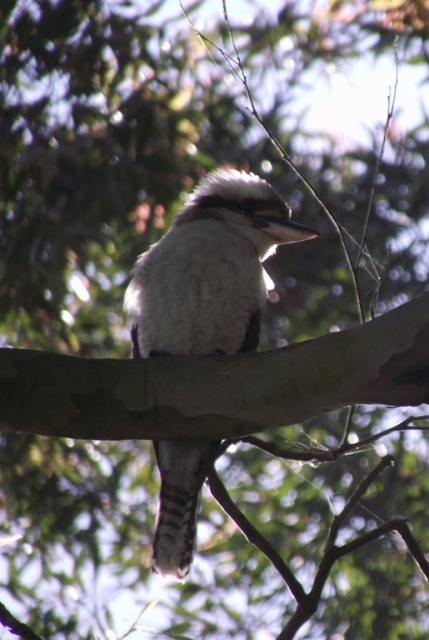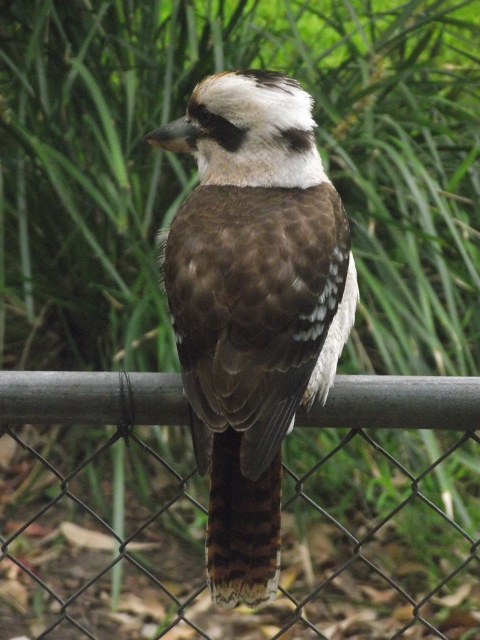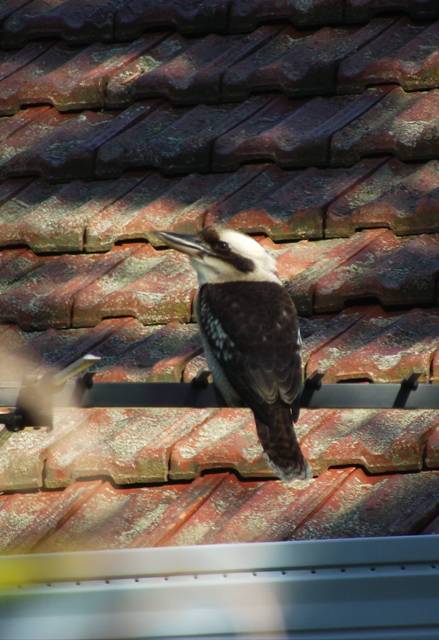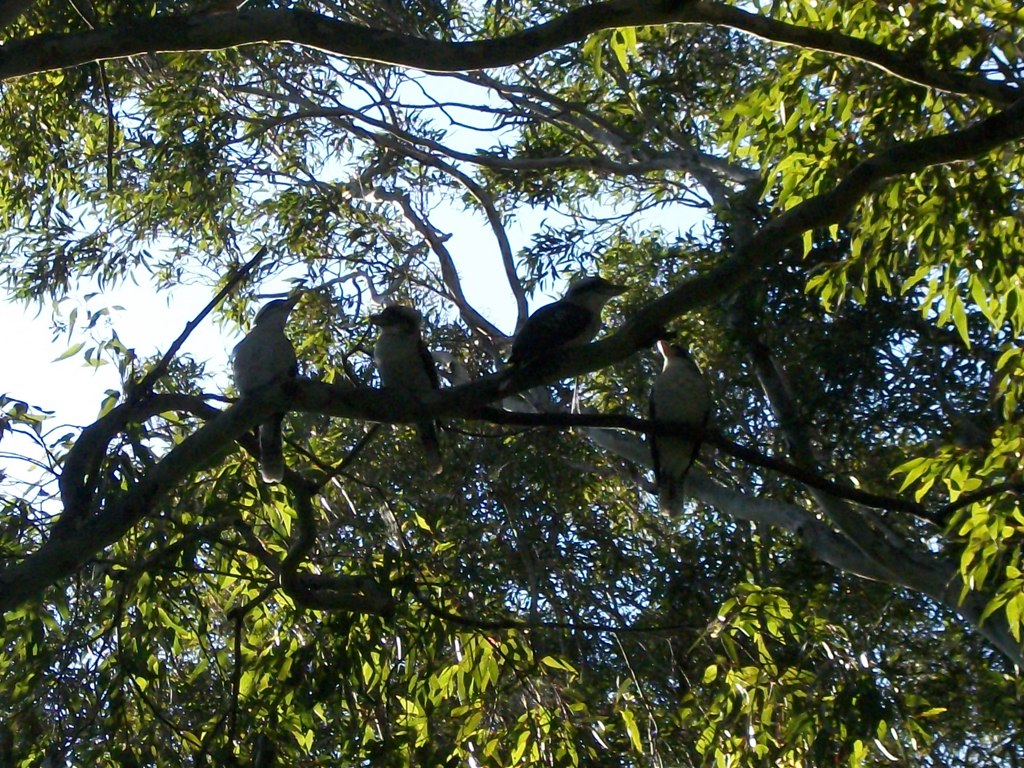March 18 -24, 2012: Issue 50
Kookaburra home turfs among our trees
Every year we are fortunate to see two new kookaburras grow up in our home yard’s trees. We’ve seen one year’s brood after another follow their mum and dad among the eucalypts, learning all kookaburra lore. By the end of Summer and into Autumn, they are still a little smaller then the adults, and the whole group of four will congregate on the boughs of their home trees to have discussions. Although the chicks leave the nest after 30-35 days, and the young adults will leave around March to April, these new adults will stay in the family area for up to four years to help raise new siblings and defend their home turf. Some pairs may fledge two broods between Spring and the end of Summer.
Kookaburras form permanent pairs and breeding occurs from Spring through to the end of Summer. They will be fed by their parents for around 3 months after learning how to fly. The ones in our yard produce two new kookaburras each year but other sources state up to four eggs and siblings may be produced. Each kookaburra may live for up to 20 years in kind environments. The male has more blue feathers in its plumage on the lower back and tail.
Their ‘laugh’ song rings out pre-dawn and at dusk. Kookaburras distinguish territorial boundaries by this and their territory, usually including nearby parks, can extend for a hundred or more house blocks or a half a valley of trees in bird terms. To our original custodians and indigenous peoples this dawn song was a signal to the Sky People to light the great fire (sun) that warms and lights each day. To many settlers the song caused an unnerving feeling initially until they were thought of in terms of being ‘bush roosters’ signalling, alike their European customs, the time to get up and get to work.
The Laughing Kookaburra, Dacelo novaeguineae, is the largest of the Kingfisher family. There are 80 species of Kingfisher worldwide, 10 of these in Australia.
The family in our yard seem quite used to us and will perch in the gum trees above us when we’re gardening ready to swoop down over our shoulders and snatch up any ‘wrigglies’ unearthed. We’ve also noticed them swoop on a Norfolk pine to our eastern boundary late each afternoon, continually opening up a bough wound to eat or gather the sap it weeps.

Above: Fledgling Kookaburra end of October, 2011


Copyright Pittwater Online News, 2012. All Rights Reserved

Kookaburra Family in our backyard, Wednesday afternoon, 14.3.2012 (babies in between adults).